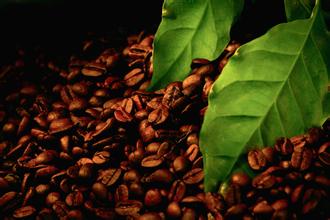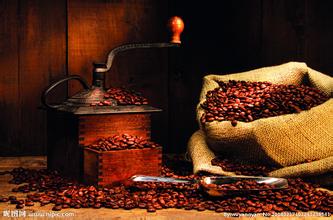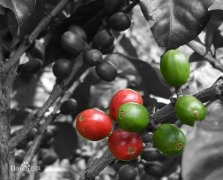Panamanian Coffee processing method Honey treatment and traditional washing
Panamanian coffee originated in 1780, when European immigrants introduced the first Tipica species. Located in Central America, the natural advantages of sunshine, land and mountains, coupled with sufficient labor population, make this area an excellent area for growing high-quality fine coffee, which is a paradise for breeding coffee. In particular, Geisha coffee produced in Panama has driven the global trend of attention to fine coffee and successfully attracted interest in Panamanian coffee in the global market. Boquete is Panama's oldest and most famous coffee-producing region, located east of the Baru volcano and is a plateau with an average elevation of about 1,000 - 2,000 meters. Among them, Volcan Baru National Park is an ecological conservation area, rich in biodiversity, with a variety of microclimates, coupled with the year-round haze, abundant rainfall, resulting in very good local cultivation conditions, making the coffee has a unique aroma, Panama coffee production is the most, the best quality production. Every harvest season, coffee farmers will wash the delicate method, and drying in the sun, so that coffee beans full and pure flavor.
The Baru volcano is not only the highest mountain range in Panama, but the sediments produced by early volcanic activity and eruptions bring abundant and very fertile soil, which is rich in nutrients, especially phosphorus and sulfur. When mixed with clay, together with unique climatic patterns, it forms an environment suitable for the growth of high-quality coffee. The dense forest and the large number of species form the overall biodiversity.
The coffee farmers here, about 50 of them in a small cooperative, produce coffee the traditional way in the Borquites-growing it in a near-natural environment. Although the yield is not high, it can maintain a rich ecological environment, and the soil quality can be maintained or even improved. Natural cultivation methods are not only beneficial to the environment, because coffee fruit grows slowly, so it is easier to grow high-quality and very good flavor coffee beans. The farmers manually harvest the whole berries and send them to the nearby Cafe de Eleta S.A. for post-processing, which is about 4 km away from the farm and has a modern laboratory for quality control and manual screening.

Important Notice :
前街咖啡 FrontStreet Coffee has moved to new addredd:
FrontStreet Coffee Address: 315,Donghua East Road,GuangZhou
Tel:020 38364473
- Prev

Boutique coffee Panamanian coffee manor Panamanian coffee producing area
Panamanian coffee originated in 1780, when European immigrants introduced the first Tipica tree species. Located in Central America, with the natural advantages of sunshine, land and mountains, coupled with a sufficient working population, the region is an excellent area for growing and producing high-quality boutique coffee, and it is a paradise for coffee. In particular, the Geisha coffee from Panama has led to the global customs.
- Next

Vivette South Fruit Highland Guatemala boutique coffee beans
Of the three major non-volcanic coffee-producing regions in Guatemala, the Weitango Highland has the driest climate and the highest elevation. The dry and hot wind from Mexico's Tehuantepec plateau protects the area's coffee from frost and can be grown to 2000 meters (6500 feet). Because of its remote location, all coffee farmers have to process their own coffee.
Related
- Does Rose Summer choose Blue, Green or Red? Detailed explanation of Rose Summer Coffee plots and Classification in Panamanian Jade Manor
- What is the difference between the origin, producing area, processing plant, cooperative and manor of coffee beans?
- How fine does the espresso powder fit? how to grind the espresso?
- Sca coffee roasting degree color card coffee roasting degree 8 roasting color values what do you mean?
- The practice of lattes: how to make lattes at home
- Introduction to Indonesian Fine Coffee beans-- Java Coffee producing area of Indonesian Arabica Coffee
- How much will the flavor of light and medium roasted rose summer be expressed? What baking level is rose summer suitable for?
- Introduction to the characteristics of washing, sun-drying or wet-planing coffee commonly used in Mantenin, Indonesia
- Price characteristics of Arabica Coffee Bean Starbucks introduction to Manning Coffee Bean Taste producing area Variety Manor
- What is the authentic Yega flavor? What are the flavor characteristics of the really excellent Yejasuffi coffee beans?

